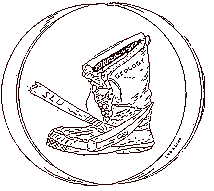William "Bill" Romey

I first met Dr. William Romey in the late 1970’s while I was a student, and he a professor, in the Geology Department at St. Lawrence University. I remember first contact over the phone as he was assigned as my advisor. I asked if Dr. Romey was there and he said “No, but Bill Romey is, and he is eager to meet you”. From that humble beginning, I developed a respect for Dr. Romey which has only grown as I have learned more about him. Taking classes from Dr. William Romey and his colleague, Dr. William Elberty, was a pleasure and set the stage for my career and it likely has for many of you.
Later I was to learn of the depth and breadth of his work, first in my own field, and then in many other fields, as Bill was truly a renaissance man. I respected his work in the Adirondacks, hard earned and in three dimensions, with a scarcity of exposure but an abundance of black flies. We crossed paths at a Penrose Conference at the Laramie Anorthosite when I was a graduate student and just last year he dug up a photograph of me against a spectacular roadcut. Later I was to learn this was the tip of the anorthosite, so to speak, and Bill had made inroads in many fields including the oft overlooked field of Geoscience Education. Years later, at a Geological Society of America meeting in Philadelphia in 2006, I would be witness to his receipt of the Neil Miner award from the National Association of Geoscience Teachers (NAGT). This was a testament to his time working on the AGI’s Earth Science Curriculum Project, for which he served as President in 1973, and many years as an active member of NAGT.
As many of you know, the two Bills eventually started a Geography program at St. Lawrence University which lives on in the Geographic Information Systems program. Bill Romey was an exceptional student of culture, architecture, and, as it turns out, some of the finer things in life such as wine and food. His travel was extensive, as his writing and speaking. Later on in career, when Bill’s grandchildren were classmates of my own children at Potsdam High School, Bill would share his written recollections with me. The “notes” from his trip down the St. Lawrence River with his beloved wife, Lucretia, turned into one of the best illustrated and annotated travel guides I have ever had the pleasure to read. One thing was clear from reading about Bill’s life – he was never off duty, never not observing, never not writing his impressions down. The term life-long learner took on a new meaning for me.
As many of you know, Bill’s work didn’t end when he retired from St. Lawrence it merely shifted to Cape Cod. Here Bill wrote, and wrote, and wrote so more. From articles, to books, to editorials, Bill kept busy between daily swims in the ocean. If you haven’t read his “Museum and Gallery Corner” in the Journal of Geoscience Education I recommend it before a trip. He had a life-time of experiences to draw from and he took full advantage of them.
In the anteroom to our x-ray lab there is a stone grey, steel cabinet labeled “Romey’s Freaking Rocks”. In it is a collection of exquisite and unusual samples from Bill’s time on exchange in Norway and Russia. However, Bill’s legacy lives on in many of us who happened to intersect in space and time and interacted with him. His presence in the North Country is still felt and his son, Bill Jr., is a distinguished biology professor at SUNY Potsdam.
- Jeff Chiarenzelli '81

